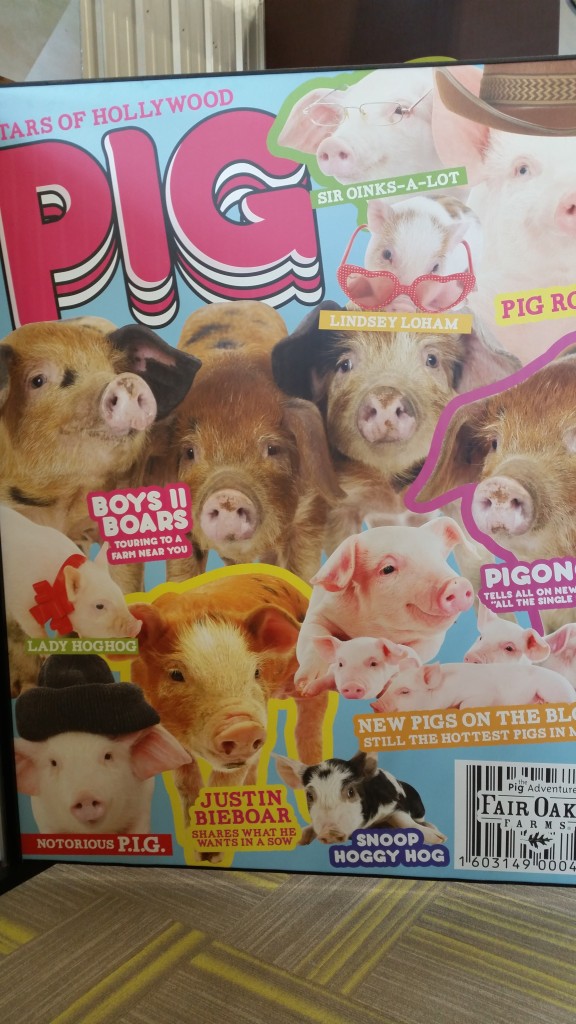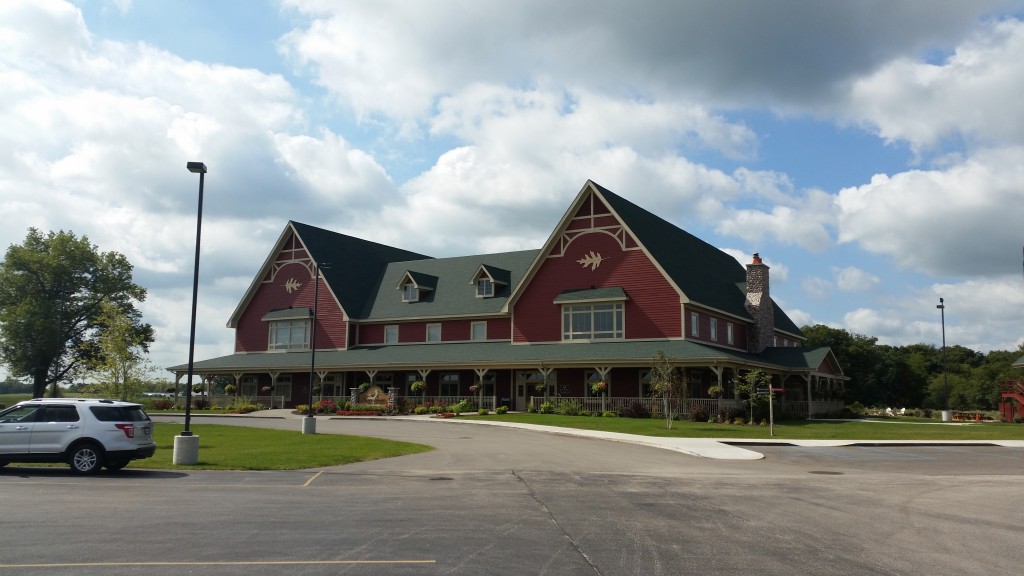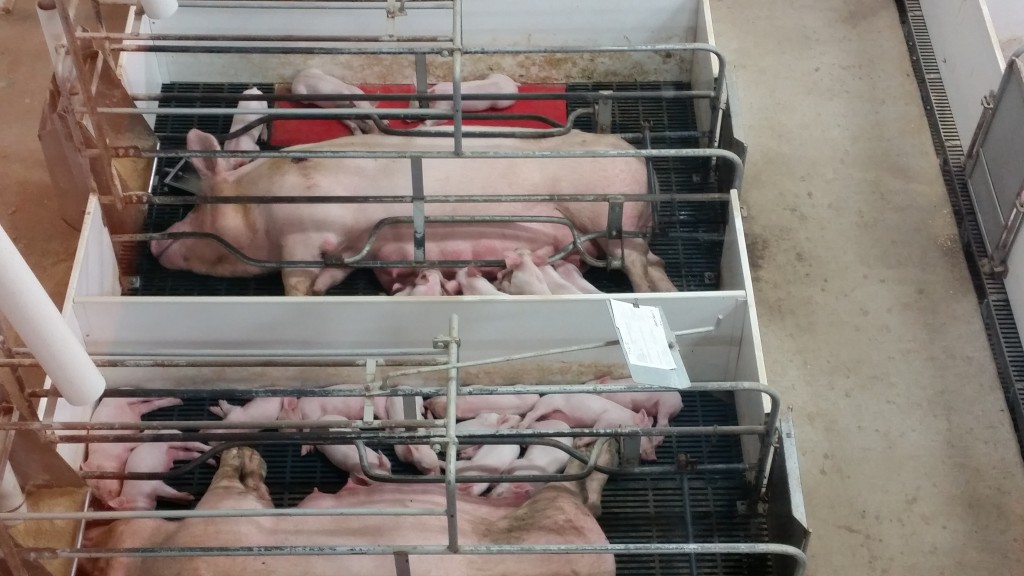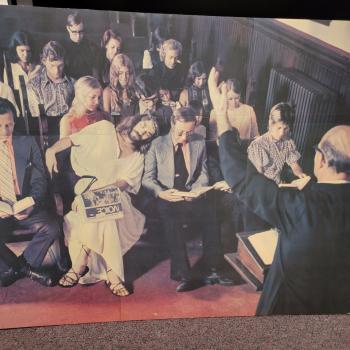On the way home from our visit to see our Russian daughter, we stopped at a large farm, to check out what Agra-Business looks like, about which our Kentucky poet and activist, Wendell Berry, has had much to say. This particular operation has 19,000 acres and over 30,000 cows, but it also serves as a birthing clinic for pigs, having about 10,000 of those as well, servicing about ten local hog farms. So in this case, the porcine operation has not replaced all the local small mom and pop farms, but works in conjunction with them. We took both the cow tour, and the hog tour, though we were not allowed to get anywhere near either ‘for hygenic reasons’. And we were also told that the animals were not allowed to get anywhere near real pasture, green grass, or blue skies, also ‘for bio-safety reasons’. In other words, we are talking about cooped up cows and pigs removed from their natural habitat and not allowed, in the case of the cows, to pursue their usual herding instincts. By way of compensation, the guide tried to suggest the cows get to socialize a bit in the barns or when they are preparing to be milked and are crowded together into a holding room. The ultimate rationale of course for keeping the animals cooped up always is ‘protection of the food source from disease’, though one may well reason that the further underlying real reason is to maximize profits. The cows are milked not once, not twice, but three times a day, until of course they become udder failures, quite literally. They are milked around the clock. And the cows are not allowed to eat grass, no they must eat their corn mush laced with various ‘vitamins’ and minerals. As for the calves, they are taken from their mothers almost immediately, despite the maternal instincts of mother cows. In short, this is a thoroughly impersonal process which takes animals out of their natural habitats in order to maximize milk and meat production for the market. No consideration is given to treating these animals as something more than pieces of meat or milk sources. They are all just part of the food chain. Below are a series of pictures that I took whilst visiting this farm….
First of all, things have been set up for this to be a tourist attraction, meant to appeal to children, and with talking cows and slick films about the whole matter…. in addition there is a bakery, a large restaurant, and even a BP station with a cow painted on the side of it! It’s one stop shopping and touring at this farm.
The operation here is uber-clean. Indeed, I’ve never seen pig pens or cow barns this clean before. And there are lots of informative signs…. such as …..
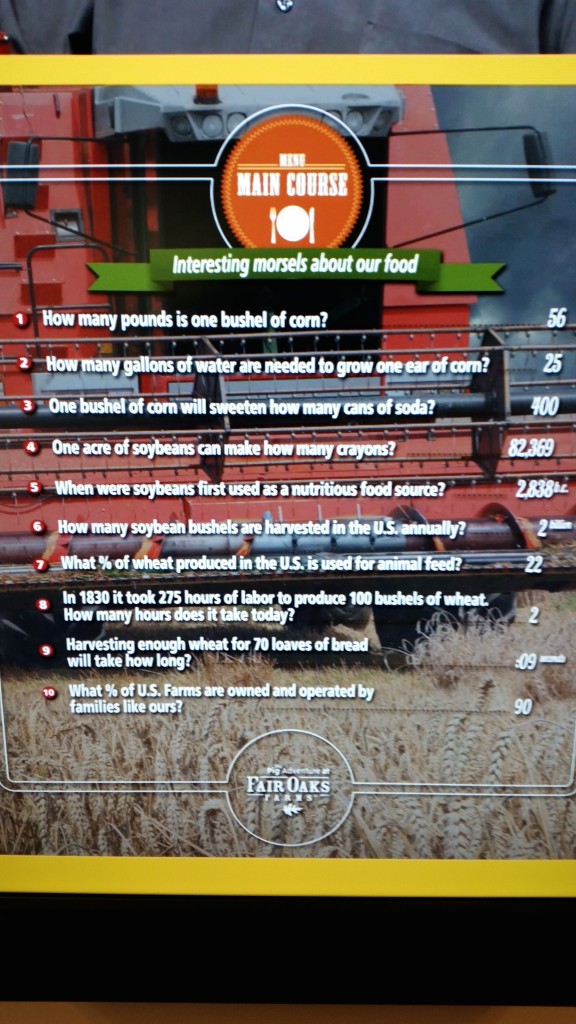

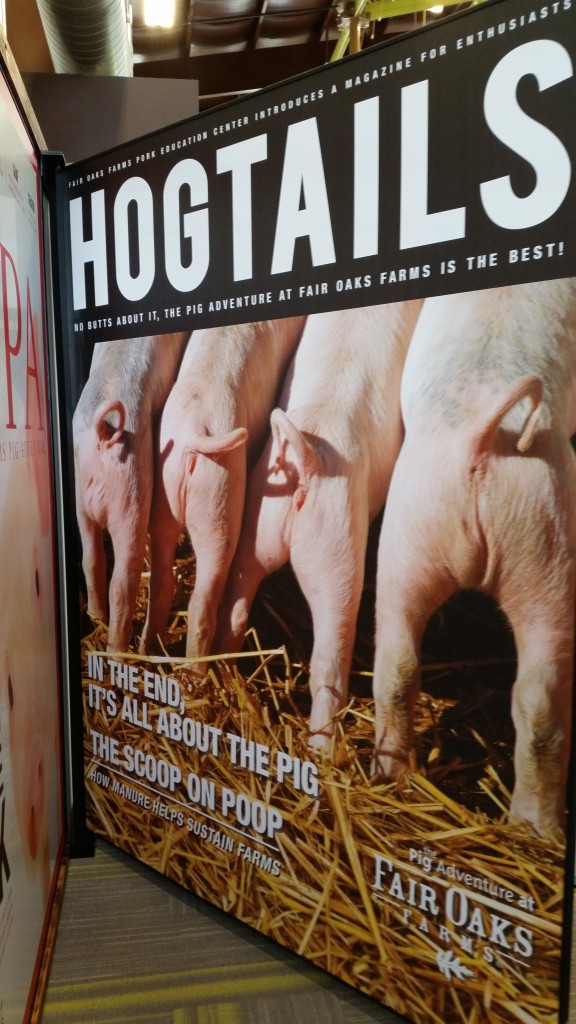
Of course the irony of these slick productions is that they try to make the animals seem more like persons, while actually treating them in thoroughly impersonal manners. Here are some shots of what I’m talking about…. We were even told at one point that you can tell these are happy cows because you see them chewing their cud! You must be kidding. What else are they going to do?
first the cows….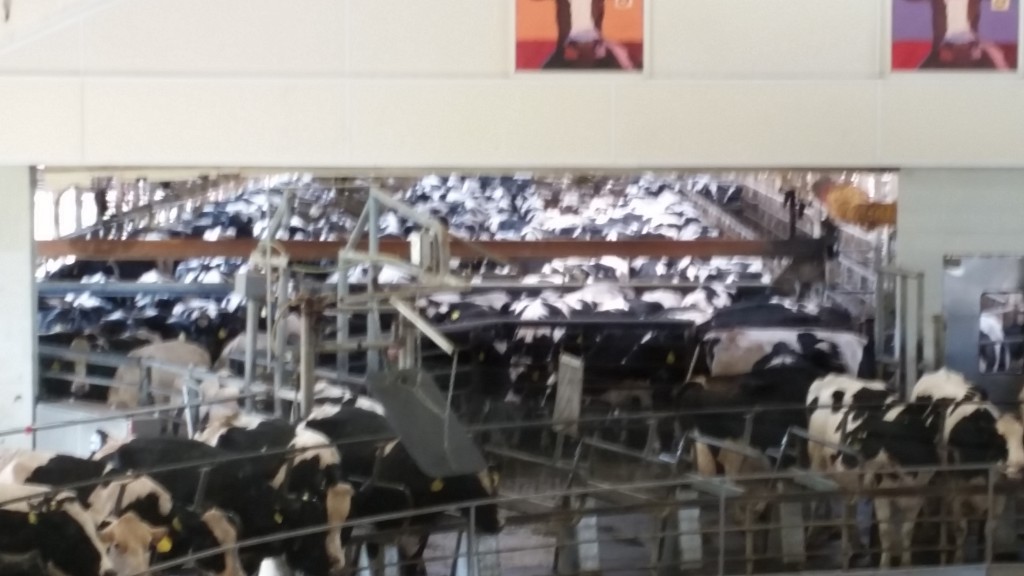


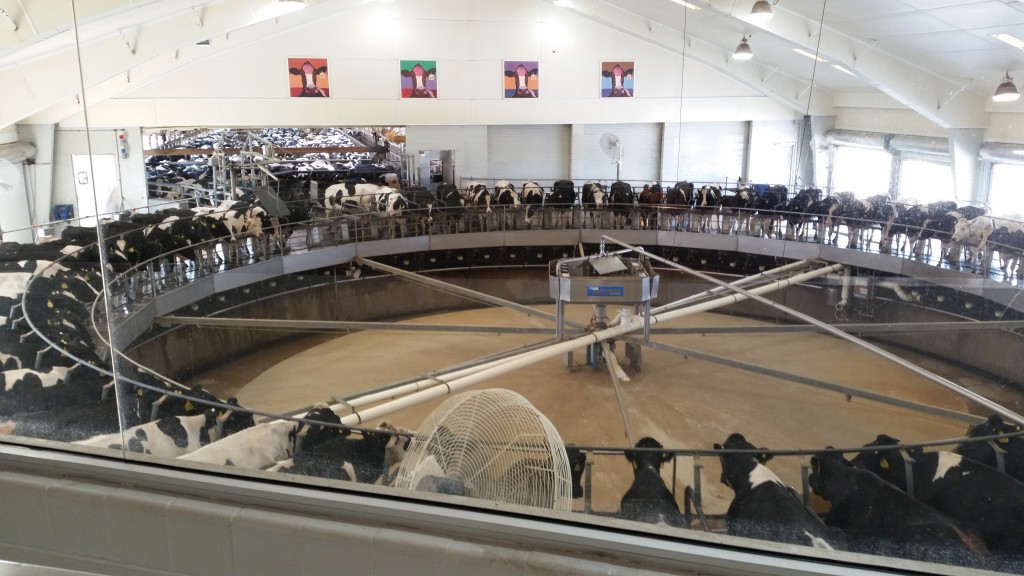
This is what you call milking them for all their worth. And yes the calves are not only separated prematurely from their mothers, they are put in little individual confined shelters, like dog houses, preventing any real interaction with other cows. 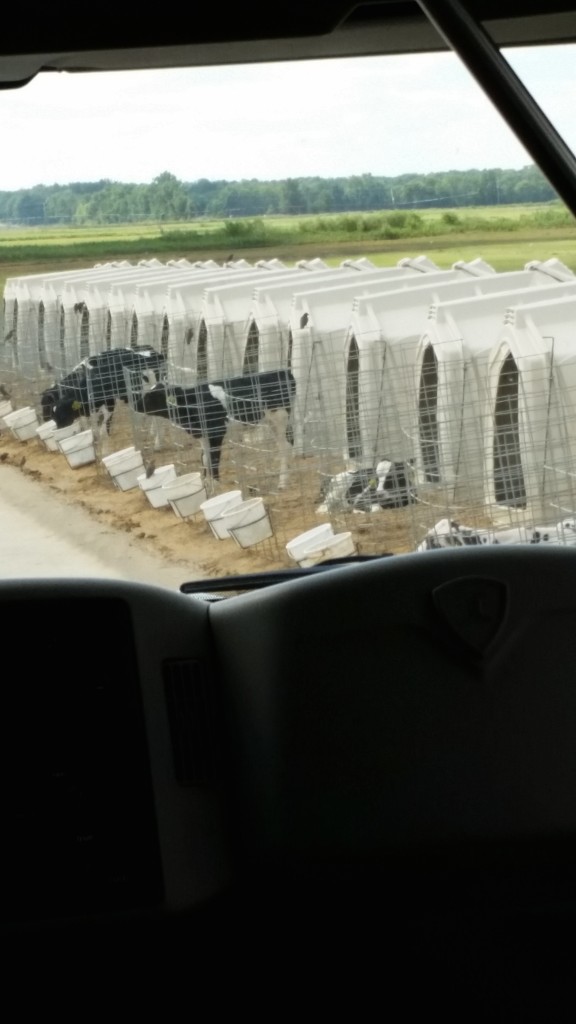
This is the best shot I could get through the tour bus window of the crowded conditions and bunching up of the cows at feeding time…
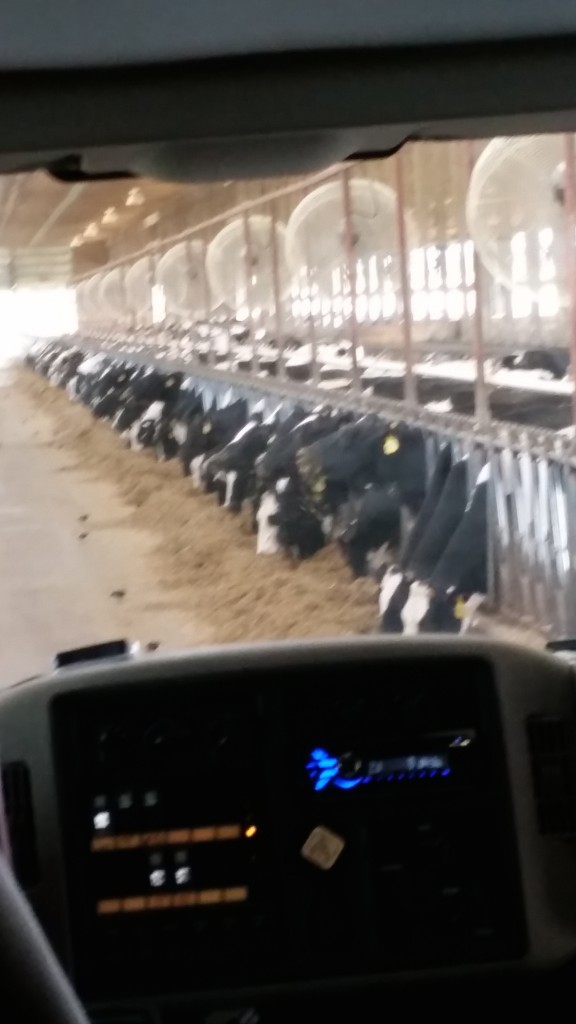
I could regale you with a dozen pictures of the pigs, but three will suffice. We saw mothers nursing 12 or more piglets at a time, and then at the earliest appropriate moment they are carted off to the pig farms and the slaughter houses. Old fatty, sows are eventually going the same route, but for the lesser quality of meat. It is interesting that this farm is a major supplier of the Kroger chain of grocery stores.
Let me be clear that the cows and pigs are not being abused. Indeed, they are kept in a very comfortable environment in terms of cleanliness and temperature. And they have plenty of medical attention. Everything is done to preserve the animals until they are used up or ready for slaughter.
Obviously, there are some benefits to the consumer of this kind of operation, namely cheaper food prices due to mass production. And there were plenty of vets around to check the animals constantly for disease etc. to protect the food supply of milk and meat. But there is a serious concern about the depersonalizing and impersonal nature of this whole process which gives no consideration to the basic instincts and needs of the animals. I have seen the other side of this equation, as I have pastored pig farms in eastern N.C. and they gave their animals lots of personal attention. Even named their pigs, rather than punching a tag in their ears with a number. They also did not force feed their animals endless corn mush either. And the meat and the milk was still healthy and good. One concerning question, which Ann and I forgot to ask is ‘Why is milk produced in this fashion so much more likely to spoil quickly, than organic milk?’ The farm we visited did not produce organic milk, which is quite rightly, increasingly popular in the stores.
The ethics of farming these days is complicated, as many small farmers simply can’t make a living, and are pushed out of business or into partnerships with agra-business. The trends towards supporting local farmers at farmers markets and even in the stores, to cut down on truck-farming and all the fuel etc it wastes, is a good thing, as is the use of more organic products. But agra business is big business, and on the basis of ‘the ends justify the means’ animals end up being treated in something less than a humane manner. And as a Christian, I am concerned about that.


